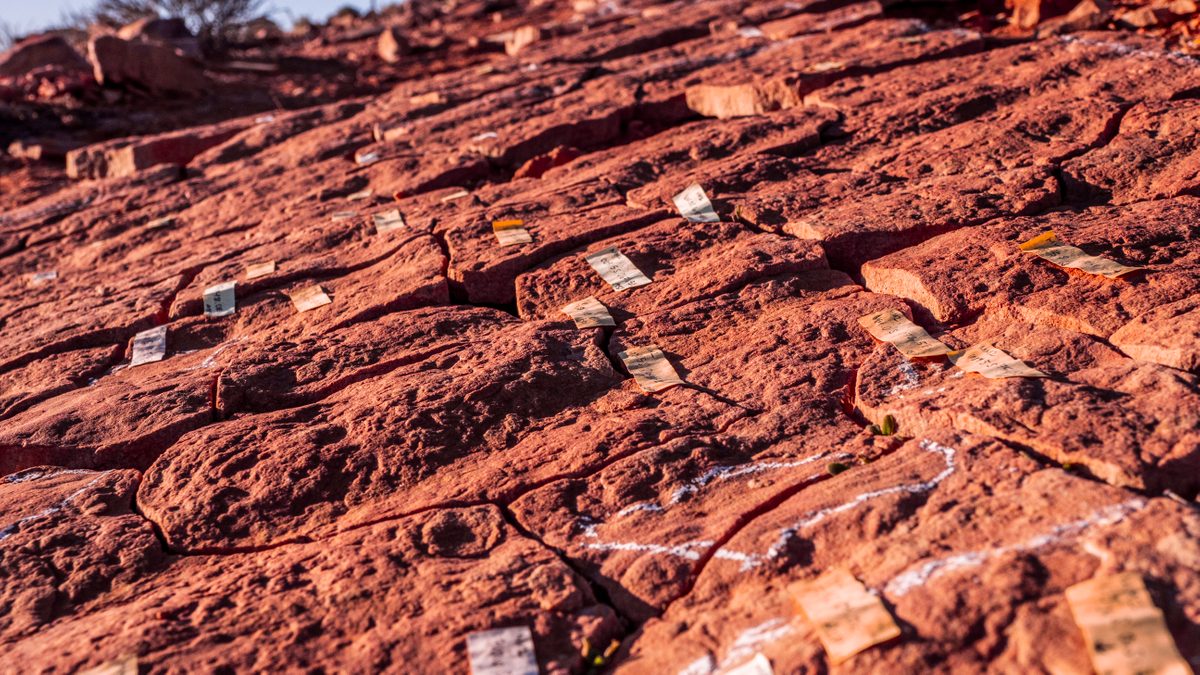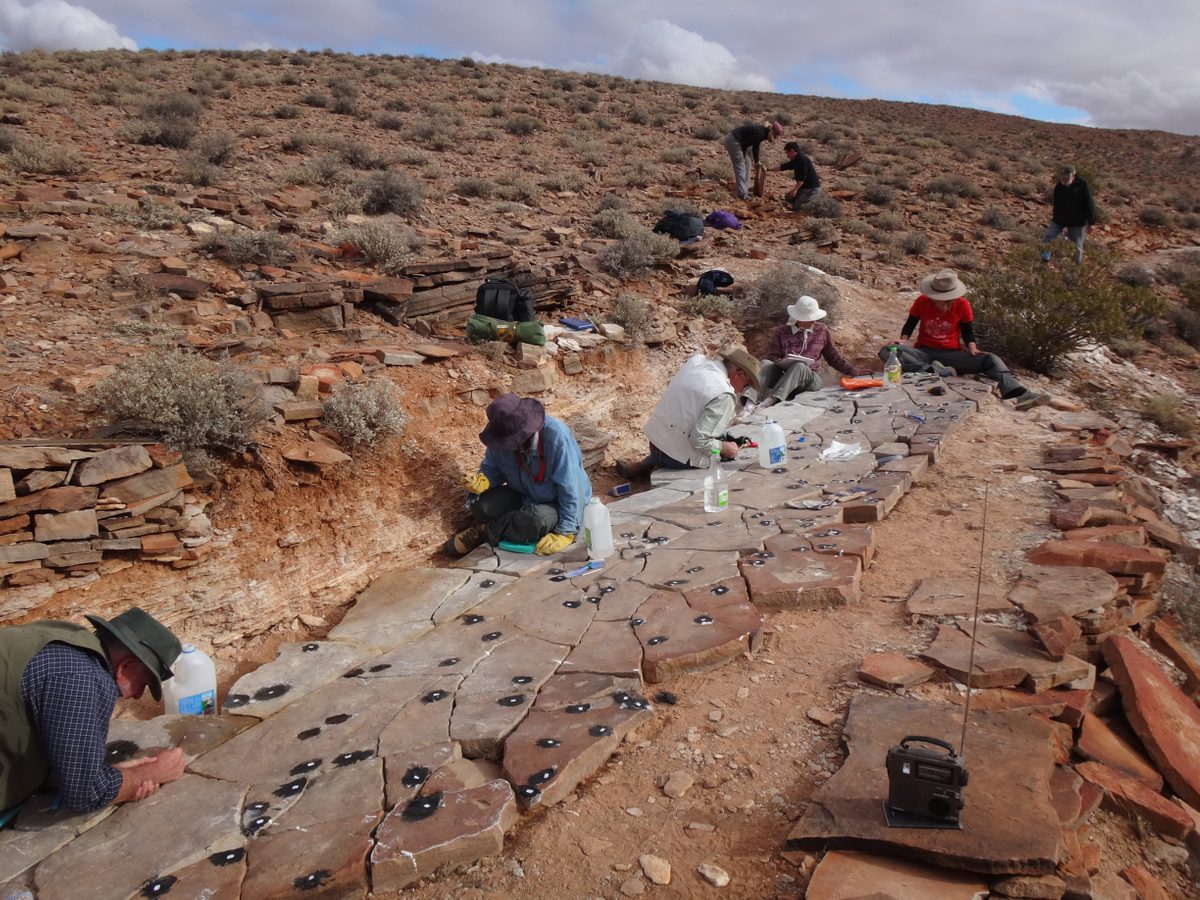
The Nilpena story
On the western margins of the Flinders Ranges lies Nilpena, the single most important site on the planet for the Ediacaran rise of early animal life. In Nilpena’s unassuming hills, an ancient seafloor containing strange early lifeforms, some half a billion years old, have been exquisitely preserved in the fine sandstone grain.
Nilpena is now recognised as the richest and most diverse Ediacaran fossil site on Earth, and has revolutionised our understanding of this remarkable time in Earth’s history. Nilpena has a diversity of over 40 species recorded in the sediments of its ancient seafloors, and palaeontologists are revealing fascinating evidence about how these strange and cryptic early creatures lived, reproduced, and even hunted.
Nilpena’s significance is integral to the bid for World Heritage for the Flinders Ranges and in April 2021, the Flinders Ranges was placed on Australia’s World Heritage Tentative List.

The discovery
Ediacaran fossils were famously discovered in the Ediacara Hills by South Australian geologist Reg Sprigg 75 years ago. This discovery was the first time the fossilised remains of an entire community of soft-bodied creatures had been found in such abundance anywhere in the world. The discovery was so significant that fossils were named after him and the Ediacaran geological period was named after the location where the fossils were found.
Almost 40 years later in the 1980’s, Ross Fargher leaseholder of Nilpena Pastoral Station, found Ediacaran fossils on his recently-acquired property when a family friend noticed ripple rocks of the ancient sea floor used as the flooring of Nipena’s woolshed. Here, south of Reg Sprigg’s original discovery site, a rich array of early lifeforms have now been identified, representing the dramatic initial radiation of animal life on Earth and the peak of the diversity of these unusual lifeforms that existed on Earth 560 – 542 million years ago. This location was placed on Australia’s National Heritage List in 2007 for its quality of intact fossil specimens.
One of Nilpena’s most superbly preserved beds, known as Alice’s Restaurant Bed, was unearthed in 2016 by leading palaeontologist Dr Mary Droser and her team. The bed contains many rare species, with evidence depicting the seafloor was once a habitat and complex environment, where there was activity of mobility, feeding and reproduction. It also contains several newly described taxa, including one named after Sir David Attenborough (Attenborities janeae) who visited Nilpena to film part of the BBC Documentary ‘First Life’.
Today, nearly 40 fossiliferous beds have been revealed at Nilpena, representing multiple environments and revealing tens of thousands of extremely well-preserved and diverse Ediacaran fossils. As an active research site, regular field seasons by both the University of California, Riverside and the South Australian Museum continue to expand our knowledge of this incredibly significant period in Earth’s history.
Embark on a mesmerising journey into the past
Book your Nilpena Ediacara National Park tour.
